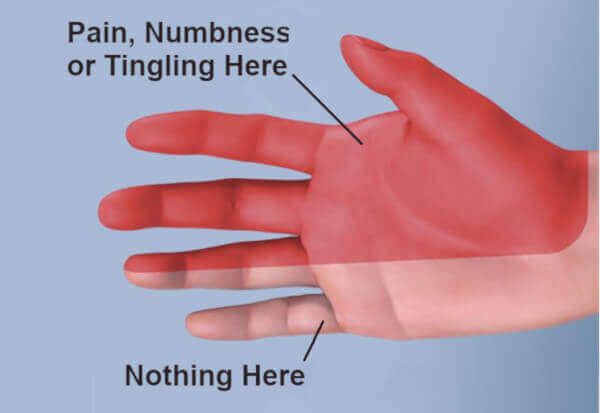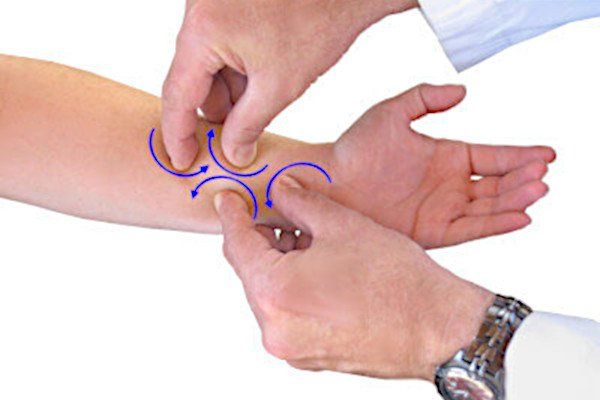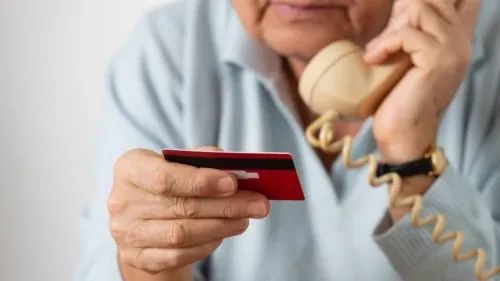Several clinical studies were conducted to determine if copper bracelets or magnetic bracelets work for arthritis pain. All of these studies concluded the bracelets are not effective pain relievers.
Does a Carpal Tunnel Bracelet Relieve Symptoms?
From Dr. Z - Carpal tunnel syndrome specialist
Will a Carpal Tunnel Bracelet Relieve Symptoms?
Table of Contents
- Do carpal tunnel bracelets really work? Here’s the truth
- What is carpal tunnel syndrome?
- Symptoms
- Who gets it?
- How doctors & therapists treat carpal tunnel
- Non-surgical treatments
- Surgical treatments
- Mixing real & false claims
- The main problem with carpal tunnel bracelets
- Trust a real, FDA Cleared medical product
- Summary
- FAQs
- About
Do carpal tunnel bracelets really work? Here’s the truth
If you’re struggling with finger or hand pain, numbness, tingling, burning, or weakness, you’ve probably seen ads for “carpal tunnel bracelets” that promise quick relief. They often feature smiling customers claiming the bracelet was a miracle cure for their symptoms. But are those claims true?
It’s easy to understand the appeal. The idea that a simple bracelet—often made with copper or magnets—could relieve carpal tunnel syndrome sounds wonderful, especially if you want to avoid surgery or medications. Advertisements make them look credible, using medical-sounding language and glowing testimonials.
However, the reality is very different. Despite their popularity, no carpal tunnel bracelet has ever been proven effective in scientific studies. Major health authorities, including the Food and Drug Administration (FDA) and the Federal Trade Commission (FTC), have even issued warnings against companies that make false or misleading claims about these products.
If you truly want to relieve carpal tunnel symptoms, there are safe, proven
nonsurgical treatments that actually work. In this article, you’ll learn why bracelets fail—and what real therapies can help you heal your wrists and hands the right way.
- Think you have carpal tunnel? Complimentary self-test
- Already know you have carpal tunnel?
This Quiz tells you its severity
What is carpal tunnel syndrome?
Carpal tunnel syndrome is a problem that starts in your wrist area. The tendons in that region inflame and swell. As swelling increases, the pressure inside the wrist joint also increases.
This high pressure pushes against all of the tissues inside the wrist. One of them is a main nerve going to the hand called the median nerve. When this nerve is pressed upon (compressed) it produces all of the symptoms of carpal tunnel syndrome.
Symptoms
The symptoms of carpal tunnel syndrome vary from person to person. Also, their intensity can range from "mild" to "very severe".
Symptoms can also escalate slowly or rapidly. Typically, from the first sign of symptoms, they advance to the "severe stage" within 6 months.
About 40% of the time symptoms disappear by themselves, without treatment. In the rest of patients who get carpal tunnel syndrome (about 60%) symptoms either stay the same or worsen without treatment.
Finally, carpal tunnel syndrome happens in both hands about
88% of the time within 6 months. This is called "bilateral carpal tunnel syndrome".
The symptoms of carpal tunnel include a wide array of abnormal sensations or discomfort in the palm and fingers (but not the pinky finger). The sensations most commonly experienced are:
- Pain
- Numbness
- Tingling (or "pins-and-needles")
- Burning
- Shooting electric shocks
- Itching
- Puffy or swollen feeling
When carpal tunnel first begins, it usually appears only at night, when trying to sleep. Symptoms like numbness or pain often wake you up. But as the condition progresses, symptoms also appear during the daytime.
Do you have carpal tunnel syndrome (as opposed to wrist tendonitis)? Take this self-test.
Most patients with carpal tunnel syndrome also experience functional problems with their hand. These include:
- Loss of strength
- Gripping difficulties
- Hand clumsiness
- Loss of temperature sensation (hot or cold)
- Loss of finger dexterity
Who gets it
About 1 in 20 people have carpal tunnel syndrome. In fact, it's one of the most common musculoskeletal disorders doctors see. You're at high risk for getting carpal tunnel if you:
- Are female
- Have a job requiring prolonged hand stress
- Have a family history of carpal tunnel
- Are pregnant
- Have a small body frame
- Smoke
- Have diabetes
- Have rheumatoid arthritis
- Have a fracture in the hand area
- Have hypothyroidism
- Are under emotional stress
- Undergo chemotherapy
How doctors & therapists treat carpal tunnel
There is a small handful of legitimate and proven remedies for carpal tunnel syndrome. They're used successfully by doctors and therapists every day to treat their patients.
Essentially, there are 2 basic types of treatments: non-surgical and surgical.
Non-surgical treatments
Of the 8 million cases of carpal tunnel syndrome reported each year, over 7 million are treated without surgery and 600,000 are treated with surgery.
There are 5 primary non-surgical treatments for carpal tunnel syndrome which are clinically proven to be effective. In fact, the American Academy of Orthopedic Surgeons (AAOS) recommends using one or more of these treatments before considering hand surgery.
The non-surgical treatments used by doctors and therapists to relieve carpal tunnel symptoms are:
- Rest and pain medicines: These are effective for mild symptoms only.
- Steroid injections: Steroid is injected into the wrist to reduce swelling. It's successful in 45% of patients.
- Night bracing: By itself, night bracing relieves only mild symptoms. But it's not effective for moderate symptoms.
- Myofascial release massage: A more aggressive therapy with a 80% to 90% success rate.
- Carpal tunnel stretching exercises: By themselves, they relieve only mild symptoms.
Some people have severe carpal tunnel symptoms. In that case they will likely see maximal benefit from two or more of the above non-surgical treatments simultaneously.
Surgical treatments
Hand surgery is another option to treat carpal tunnel syndrome. Unfortunately, the success rate of surgery (measured by patient satisfaction at 2 years) is about 50%. This low probability of success is the main reason the AAOS advises trying non-surgical remedies first.
The aim of carpal tunnel surgery is to cut a thick ligament inside the wrist joint. When the ligament is cut, your wrist bones snap apart. This creates more room for the median nerve (it actually "releases" the nerve) so it's no longer compressed.
All patients who opt for surgery will have one of two types:
- Open carpal tunnel release surgery:
The doctor makes a long slit in the palm. It's
more painful, requires more extensive
hand rehabilitation and
recovery time, and usually results in more
hand weakness.
- Endoscopic carpal tunnel release surgery: Fewer doctors perform this. But it requires only 1 or 2 small holes in the hand. There's less pain and requires less extensive rehabilitation and recovery time and faster return to work.
Each of these surgical procedures has certain advantages and disadvantages ("pros and cons"). Discuss each option thoroughly with your carpal tunnel doctor to insure the procedure you're getting is right for you.
Mixing real & false claims
Scientific research shows that copper and magnetic fields do indeed have biological effects. Copper, most notably, is a good antibacterial agent. It’s also an essential trace element for the body. The same goes for many other elements like cobalt, nickel, iron, and selenium.
But those biological effects are not relevant to carpal tunnel syndrome. Bacteria have no role in this disorder. Nor does trace element deficiency have an impact on carpal tunnel syndrome.
Likewise, magnetic fields
have an effect on cell biology. They can influence growth and some metabolic processes if the magnetic field is high enough. But the magnetic field must be extraordinarily high to see any effect. Even so, none of these effects have any relationship to carpal tunnel syndrome.
So how do copper and magnetic bracelet manufacturers claim they cure carpal tunnel pain? Simply put, the claims are untruthful.
There is no scientific evidence whatsoever that these products help carpal tunnel patients – not one single clinical study! And that’s why the FDA and FTC have finally said, “Stop!”
In the USA, you can’t just make up claims about a therapy. It's illegal. By law, it must be backed up by multiple clinical studies. And the product must be “Cleared for Use” by United States Food and Drug Administration (FDA).
The main problem with carpal tunnel bracelets
It’s bad enough the bracelets don't work. Suffering patients spend their money on false claims about a carpal tunnel bracelet bringing relief. And it doesn't.
Worst of all, if you have this painful disorder, wasting time on a bogus product will only prolong your getting the proper treatment.
The problem is that carpal tunnel syndrome is usually progressive. That means it gets worse with time. So the longer you wait to properly treat it, the more resistant to treatment it becomes. And it gets harder to eliminate symptoms.
So don't waste time on untrustworthy claims about a carpal tunnel bracelet.
Trust a real, FDA Cleared medical product
The worst thing you can do is to NOT treat your carpal tunnel syndrome right now. Waiting only makes treatment more difficult. And using a copper or magnetic carpal tunnel bracelet is useless -- and just as harmful as not treating.
Here at the CarpalRx we’ve been successfully helping patients for years. We developed a medical device for treating carpal tunnel syndrome called the CarpalRx. It produces myofascial release massage over your flexor tendons. This is the identical deep tissue massage therapy your doctor or therapist uses on your wrist and forearm to permanently eliminate carpal tunnel syndrome.
The CarpalRx is a non-surgical treatment you use at home every day for 30 days to permanently eliminate carpal tunnel symptoms. Here's why you can trust the CarpalRx:
- Developed by doctors and scientists.
- Has "Cleared for Use" status by the FDA.
- Effectiveness is supported by 4 separate clinical studies.
- Has been in world-wide use for over 20 years.
- Backed by a proven track record of
97% effectiveness over thousands of carpal tunnel patients.
Summary
A copper or magnetic carpal tunnel bracelet simply won’t work for carpal tunnel syndrome. Actually, they don’t even come close to working, according to the FDA and FTC. The print ads and video commercials you see are
not trustworthy.
Thankfully, they’re becoming less prevalent since the FDA and FTC have begun handing out fines. It’s important to
not delay your carpal tunnel therapy using bogus products. If you do, it just makes it harder to eliminate the symptoms. So begin you treatment today with accepted and proven therapy.
FAQs
I'm convinced my bracelet helps relieve pain from carpal tunnel. Why is that?
There are two reasons why this could occur. First is the placebo effect. The second is that the bracelet reminds you that your hand needs extra care. It helps you remember to not stress or overly bend your hand. But it has no therapeutic benefit whatsoever.
If these bracelets don't work, then why are they sold?
The FDA cannot prosecute every company making a false claim; there simply are too many. And most of those companies are overseas and out of FDA's jurisdiction.
Is the CarpalRx FDA cleared?
Yes.












